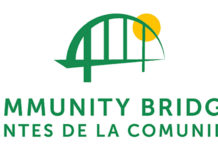The holiday season just wouldn’t be complete without a day spent with the Felton Christmas Wreath Makers at their annual get together at Barb’s house. Many of us who are regulars were anxious to get started. We arrived at midmorning eager to dig into the various piles of wreath-making greens graciously supplied by Barb and her husband, Reggie. We all shared stories and some laughs over glasses of sparkling cider or Champagne and French pastries.
This year Barb and Reg collected a slightly different mix of material than in previous years. “It’s different every year,” she said. “The drought has helped some plants set more berries. And while greens from our favorite gathering places looked much better than last year, others looked terrible. You just never know.”
I arrived at Barb’s beautiful garden and entered through a wrought iron gate. I had forgotten her plump chickens that she keeps for their eggs and thought she had added some new garden art. Once they started pecking around for insects it all came back to me. They entertained us all day taking dust baths underneath the camellias.
Barb has a great eye for combining plants, garden art and hardscaping in her landscape. The curving brick path leads to the raised deck where she hosts the wreath-making party. She has a chiminea fireplace in case the day turns chilly, but the sun was shining on this morning after a storm went through the day before. This woman has good luck in the weather department.
Everyone makes a slightly different style wreath – choosing greens, berries, seeds, pods and hydrangea blooms or flower clusters of eucalyptus, acacia, pittosporum and Ruby Glow tea tree. Hollywood juniper, deodar cedar, red cedar, black pine, boxwood, camellia, oleander with long, slender seed pods and red flower buds, California bay, privet with berries and bottlebrush are just some of the plant material that we used this year.
We wreath-makers come in all sizes and ages. I took time out to watch Barb help her grand-daughter Sawyer attach dried hydrangea blossoms to her own little wreath. They were very engrossed in their project and I had to laugh when Sawyer decided hers had just the right amount of decorations on it.
One creative wreath-maker this year made a horse from a candy cane-shaped wire frame she bought online. Using just two types of greens, Hollywood juniper for the horse’s coat and feathery Black pine boughs for the mane, a pine cone for the eye and some red ribbon for the bridle, her creation is sure to be a hit with her niece, a horse lover.
If you’re thinking of getting together with your neighbors to make wreaths or swags, start by having each bring a couple of grocery bags of greens to share with other wreath makers. It helps if you can borrow a couple of tables and have a few extra clippers on hand in case someone forgets theirs, like I did. Each person brings their own wreath frames of wire or grape vine and some thin gauge wire on a paddle to attach the bundles to the frame. Wire coat hangers work just fine, too.
Take advantage of this opportunity to prune your evergreens to use in wreaths and swags. Cuttings from fir, redwoods, pine, holly, mahonia, strawberry tree, toyon and cotoneaster parneyi make fine additions to your wreath or swag. But don’t whack off snippets indiscriminately. To reveal the plant’s naturally handsome form, prune from the bottom up and from the inside out. Avoid ugly stubs by cutting back to the next largest branch or to the trunk. If the plant has grown too dense, selectively remove whole branches to allow more air and sunlight to reach into the plant.
Trust me; you can’t make a bad wreath. They all turn out beautiful.
Jan Nelson, a landscape designer and California certified nursery professional, will answer questions about gardening in the Santa Cruz Mountains. E-mail her at ja******@*ol.com, or visit www.jannelsonlandscapedesign.com to view past columns and pictures.










